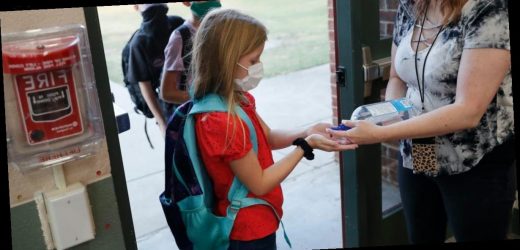- CDC researchers said there was "little evidence" that schools meaningfully fuel coronavirus transmission in an editorial on Tuesday.
- The researchers suggested reopening schools with masks and social distancing requirements.
- The decision, they wrote, may require some sacrifices — like closing indoor dining or gyms.
- Visit Business Insider's homepage for more stories.
US schools began closing their doors last spring amid a rise in coronavirus cases. The decision was based on the available science at the time, which suggested that poorly ventilated indoor spaces — particularly ones that held large groups — were hotbeds of transmission.
In general, that remains true, but a spate of recent studies has found schools to be relatively low-risk compared to other places where people congregate, like household gatherings, nursing homes, packed office buildings, or college dorms.
In an editorial on Tuesday, researchers at the US Centers for Disease Control and Prevention said there was "little evidence that schools have contributed meaningfully to increased community transmission."
The researchers called for schools to return to in-person learning, with a few ground rules in place: Masks should be worn at all times. Social distancing should be upheld. And indoor sports practices or competitions should be limited.
"It's not going to be safe to have a pizza party with a group of students," Margaret Honein, one of the CDC researchers, told the New York Times. "But outdoor cross-country, where distance can be maintained, might be fine to continue."
Keeping schools safe for in-person learning would also necessitate some sacrifices, the researchers added, like closing indoor restaurants, bars, or gyms.
A November study from researchers at Stanford University estimated that full-service restaurants, gyms, hotels, cafés, and places of worship would yield some of the biggest increases in coronavirus infections upon reopening compared to essential sites like grocery stores. Restaurants were particularly high risk, given their limited space and the fact that people tend to dine for more than an hour.
Restricting indoor dining could therefore lower community transmission, making it less risky for kids to go to school.
Masks and social distancing pay off
Schools aren't strangers to coronavirus outbreaks: After Israel reopened select classrooms for in-person learning in May, 13% of students and nearly 17% of staffers at a high school in Jerusalem got COVID-19. But the school had stopped enforcing face masks and continuously ran air-conditioning due to a heatwave.
In addition to masks and social distancing, the CDC researchers recommended increasing ventilation in classrooms, expanding testing to identify asymptomatic cases, and continuing to offer online classes for high-risk students and staff.
President Joe Biden's proposed coronavirus relief plan would allocate $130 billion to help schools implement these measures. Biden has set a goal of reopening most K-8 schools during his first 100 days in office.
"If you do mitigation strategies, it's safer for kids and adults to be in school than to be in the community," Daniel Benjamin, a pediatric infectious diseases specialist at Duke University, recently told Insider.
Benjamin's study of 11 school districts in North Carolina identified relatively few coronavirus cases from August to October: Only 32 infections were recorded in schools over the course of nine weeks. Students age 5 and up were required to wear masks, stay six feet apart, and wash their hands regularly.
A new CDC report also detected minimal transmission among K-12 schools that required masks in Wood County, Wisconsin. Out of 5,530 students and staff members, only 191 COVID-19 cases were reported between August and November. Just seven of those cases were associated with in-school transmission.
In both studies, the virus was spreading rampantly in the local community, suggesting that the mitigation strategies had indeed worked. When transmission is low, some schools may even get away with fewer precautions.
A recent study looked at transmission in primary schools in Oslo and Viken, the two Norwegian counties with the country's highest COVID-19 case totals. From August to November, 234 children were tested for the virus but only two cases were identified. None of those students appeared to pass the virus to anyone else, even though masks weren't required.
But Benjamin cautioned that schools that don't require masks are "going to be in for a rude awakening" as they grapple with the new coronavirus strains identified in the UK and South Africa, which appear to spread more easily.
"When cases go up, they will either need to mask or they're going to have real problems," he said.
If you have a story about the coronavirus pandemic you’d like to share, email us at [email protected].
Get the latest coronavirus business & economic impact analysis from Business Insider Intelligence on how COVID-19 is affecting industries.
Source: Read Full Article


